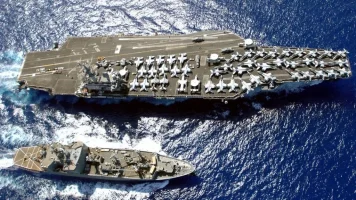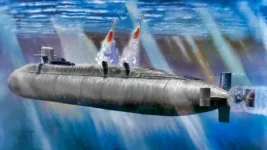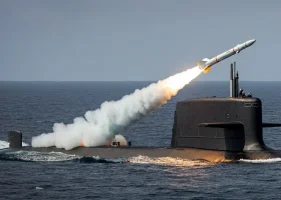- Views: 1K
- Replies: 4
In a significant move to bolster its naval defence capabilities, the Indian Navy is actively planning to integrate Directed Energy Weapons (DEWs) onto its aircraft carriers.
This initiative is in direct response to the evolving threat landscape, particularly the increasing proliferation of loitering munitions and subsonic cruise missiles, which pose a significant challenge to naval assets worldwide.
Loitering munitions, often referred to as "suicide drones," and subsonic cruise missiles are becoming increasingly prevalent in modern warfare due to their relatively low cost, high maneuverability, and ability to saturate defenses.
Their capability to loiter over a target area before striking makes them particularly difficult to counter with conventional defence systems. The emergence of these threats has fundamentally altered the dynamics of naval warfare, necessitating innovative defence solutions.
DEWs offer a potential solution to this challenge, utilizing highly focused energy, such as lasers or microwaves, to disable or destroy targets at the speed of light. This rapid engagement capability is crucial in countering fast-moving threats like cruise missiles and loitering munitions, potentially neutralizing them before they can reach their target.
The Indian Navy envisions each of its aircraft carriers requiring between 3 to 4 DEW systems to achieve comprehensive 360-degree protection against aerial threats. These systems would need to be strategically positioned to provide coverage from all angles and altitudes, leaving no vulnerabilities.
Recognizing the inherent logistical and operational complexities associated with deploying multiple high-powered DEW systems, the Indian Navy is exploring advanced technologies to optimize the defence architecture. This includes investigating more powerful DEWs with broader effective ranges, along with advanced beam steering technologies that could allow fewer units to cover a wider area.
Additionally, integration with existing radar and sensor networks is being considered to enhance target acquisition and tracking, ensuring a more efficient and coordinated defence response.
The DRDO is playing a crucial role in this endeavor, actively developing two distinct DEW systems tailored to meet the Navy's requirements. A 30 kW DEW system, currently undergoing trials, is designed to counter smaller aerial threats, including drones and loitering munitions. Its lower power output is offset by its potential for rapid deployment and lower energy demands.
Complementing this is a more potent 100 kW DEW system, specifically designed to engage more formidable threats like cruise missiles. This higher power output offers an increased probability of neutralizing or damaging the sophisticated electronics of incoming missiles, rendering them ineffective.
Globally, the development of DEWs is a growing trend. The US Navy, for instance, has been testing the Laser Weapon System (LaWS) since 2014 and is deploying the Optical Dazzling Interdictor, Navy (ODIN) laser system on some destroyers.
The Indian Navy's ambitious plan encompasses not only integrating these advanced DEWs onto future aircraft carriers but also retrofitting existing carriers with these systems. This proactive approach highlights the urgency and commitment to enhancing naval defenses in the face of evolving threats. Retrofitting existing vessels, such as the INS Vikramaditya, a modified Kiev-class aircraft carrier, poses unique challenges but underscores the Navy's dedication to modernizing its fleet.
A significant hurdle in implementing this plan is ensuring a sufficient and reliable power supply for multiple high-energy DEWs on an aircraft carrier, where space and weight considerations are paramount. Innovations in energy storage, power distribution, and potentially even the exploration of compact nuclear power sources, like Small Modular Reactors (SMRs) could be pivotal in overcoming this challenge.



